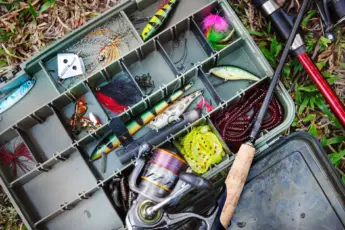One of the most highly sought-after fish in the southeastern states of Georgia, South Carolina, and North Carolina is the catfish. Catfish grow large and make excellent table fare and, as a result, become a target for anglers. However, precautions must be taken when handling the catfish because the pectoral and dorsal fins contain venom. Do catfish sting anglers?
What Kind Of Catfish Are Found In The Southern States
The most common species of catfish in the fresh bodies of water through Georgia, South Carolina, and North Carolina include the bullhead, channel catfish, blue, and flathead. The flathead catfish and blue catfish are the largest.
How Does A Catfish Sting
A catfish sting has little to nothing to do with the fish itself. The puncture wounds from the fins are a result of mishandling the fish.
When the hands or other body parts contact the pectoral or dorsal fin, the sharp spines risk penetration and result in venom injection, which is avoidable. Fortunately, the discomfort lasts for a day or two before healing when an infection is avoided.
What Happens If A Catfish Stings You
When a catfish stings you, the site of the puncture will become red and painful. The spines from the dorsal fin and pectoral fin inject venom from fluid-filled sacks.
The painful penetration site will heal with time but always wash the area well with hot water and soap.
How Dangerous Is A Catfish Sting
Most often, the effects of a catfish sting will be minimal. However, the symptoms are severe on some occasions and must be dealt with by seeking medical attention.
The severe side effects include heart arrhythmias, respiratory issues, low blood pressure, and severe pain. These are signs that your body is having an adverse reaction to the sting.
How Do You Tell If A Catfish Sting Is Infected
In the event of being stung by a catfish, it is essential to monitor the puncture wound. After being stung, remember to wash the cut or laceration with soap and water to reduce the chances of becoming infected.
Infections of the skin are easily recognizable. Keep an eye out for these telltale signs. The wound will become swollen, secret pus, turn red, causes chills and a fever, and lastly cause immense pain.
When a catfish sting is displaying these signs, seek medical attention to stop the spread of the infection.
Has Anyone Died From A Catfish Sting
Despite stings causing pain and discomfort, the risk of death is slim to none. With that being said, catfish have caused the death of anglers for alternative reasons.
Unfortunately, the spines are extremely sharp and caused puncture wounds that lead to a fatality. Additionally, catfish had carried bacteria and spread the bacteria when in contact with a human, which caused death. The likelihood of this occurring is minimal.
Is Catfish Dangerous To Eat Because Of The Venom
The flesh of a catfish does not hold the venom. Glands are located near the dorsal and pectoral fins, which contain the poison.
There is no risk when filleting a catfish by utilizing all of the meat available on the bones. However, use caution when cleaning catfish to avoid being punctured by the dorsal or pectoral fins.
Now You Know How Catfish Sting
When it comes to handling catfish, stings are avoidable. First, handle the fish cautiously by keeping hands clear of the pectoral and dorsal fins. Secondly, wear gloves in the event a sharp spine makes contact with your skin. Should the unfortunate happen and the skin becomes punctured, always remember to wash away the bacteria with soap and water and monitor for infection.







Leave a Comment
You must be logged in to post a comment.